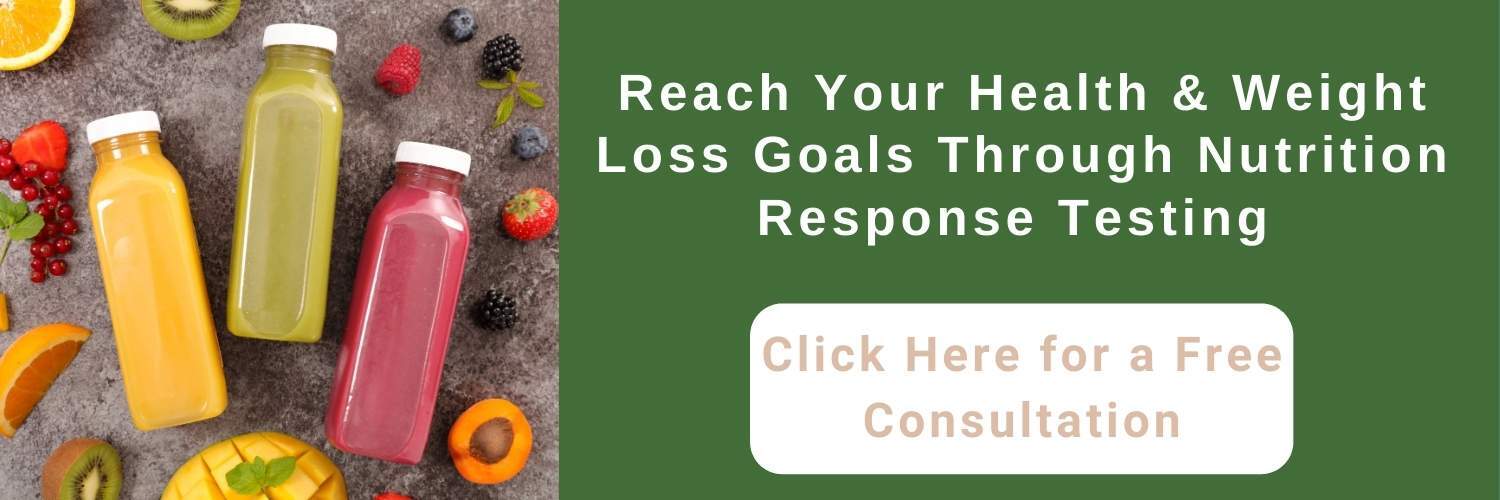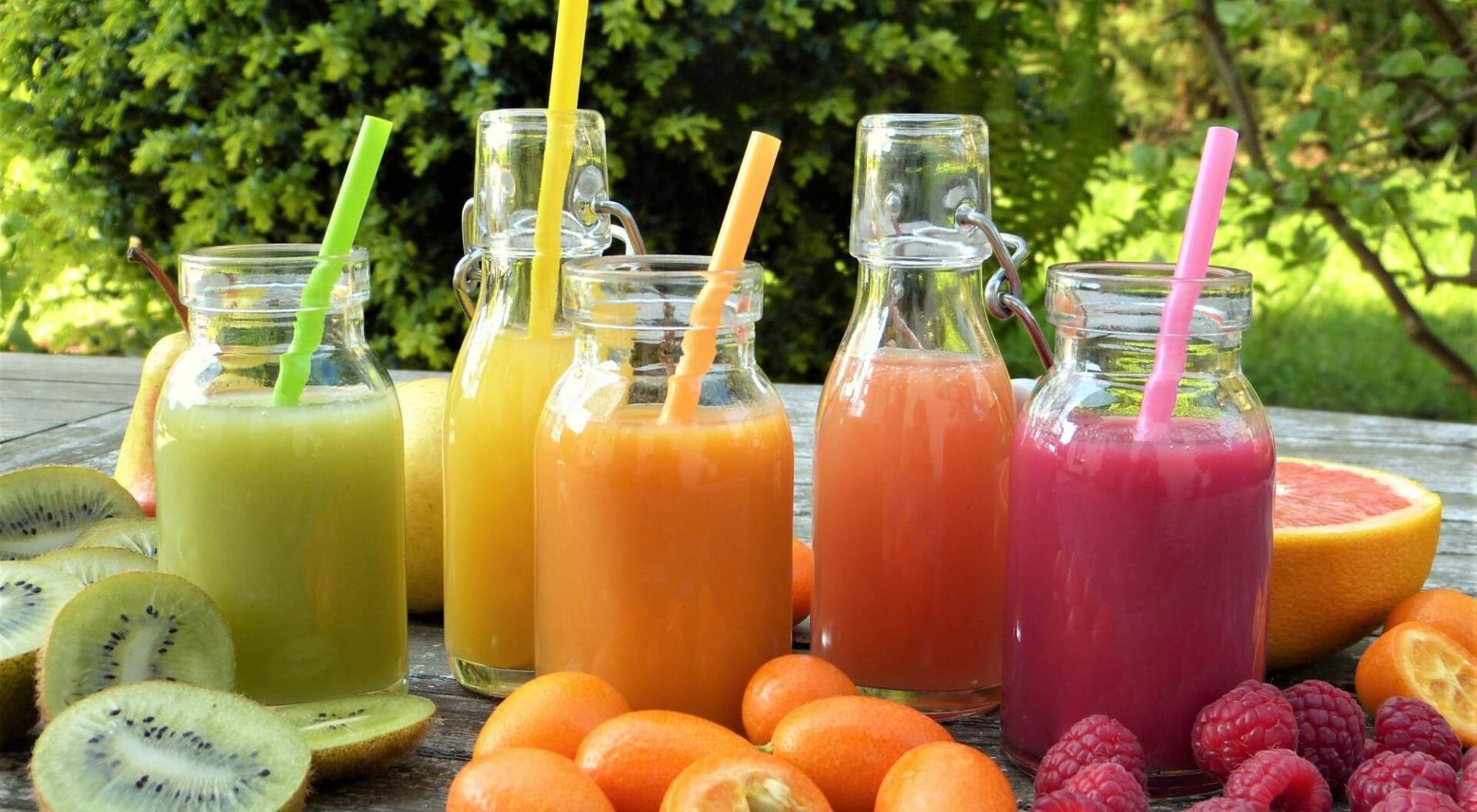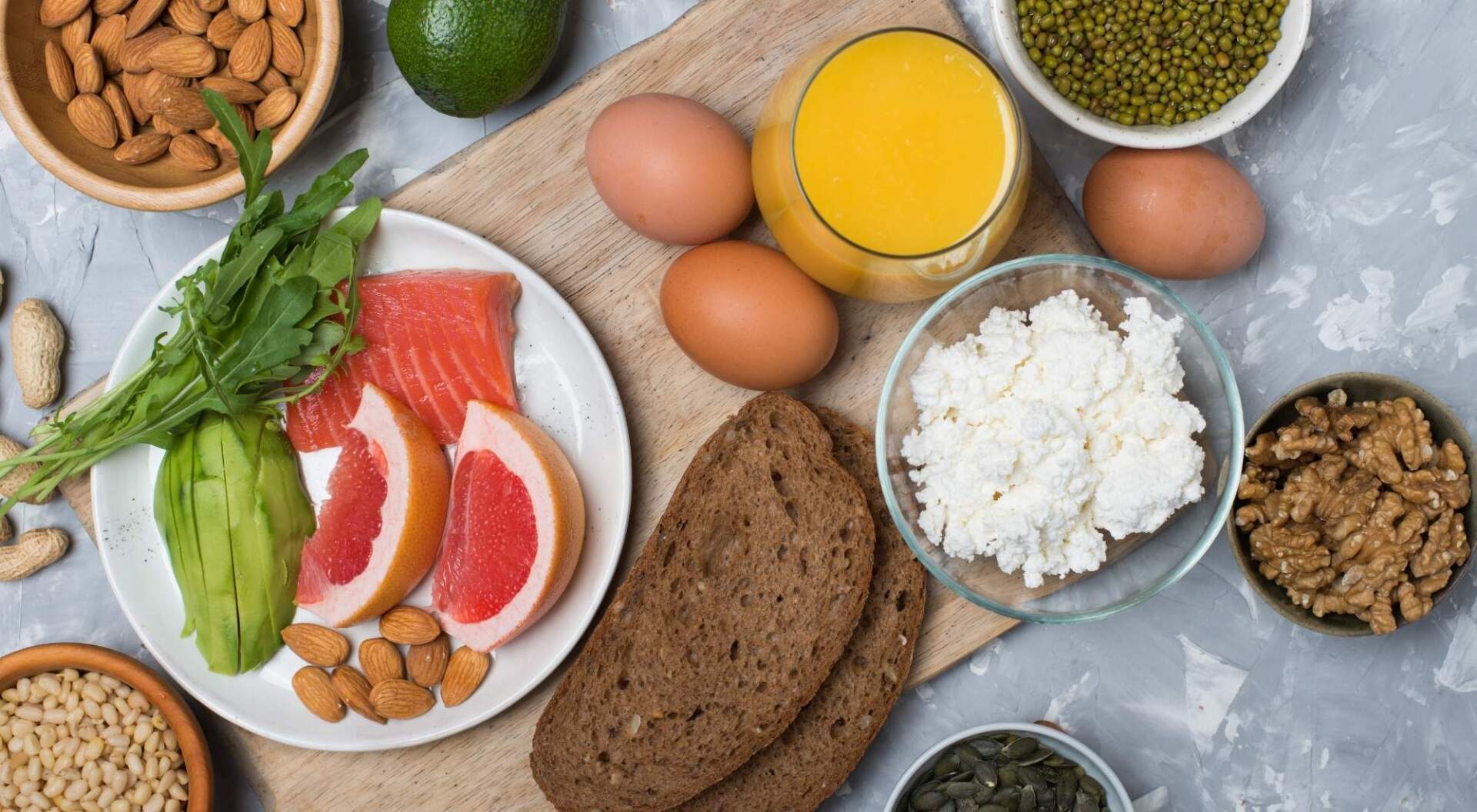The Best Foods To Eat After a Juice Cleanse: A Guide to Safely Ending Your Cleanse
"The content below is not intended to be a substitute for professional medical advice, diagnosis, or treatment. Always seek the advice of your physician or other qualified health provider with any questions you may have regarding a medical condition."
You’ve been struggling with stomach pains for months.
Constipation, bloating, and nausea are beginning to affect your daily life.
You’re not sure what is causing you to be so uncomfortable, but you’re ready for some answers.
There’s a good chance that the foods you’re consuming are destroying your gut health, causing pain and discomfort.
The good news is that
a juice cleanse can help you safely detoxify your body and strategically help you reintroduce foods that
leave you feeling good.
This guide explains how to
safely end a juice cleanse and gives details on what to eat in the days following your cleanse to avoid a major shock to your digestive system.
Table of Contents
What Is a Juice Cleanse?
During a juice cleanse, you drink only the juices from fruits and vegetables to help detoxify and clean out your body. Because of the restriction of foods and calories, people often lose weight while on a juice cleanse.
Juicing can help to add the extra
vitamins and minerals
and
improve digestion without consuming the pulps, skins, and fibrous portions of the fruits and vegetables.
Not sure if a juice cleanse will help you reach your health goals?
HealthierU offers
Nutrition Response Testing that can help
determine your health concerns and symptoms and find holistic and natural ways to address them.
How Long Does a Juice Cleanse Last?
Most often, people choose a 3 or 5 day juice cleanse option. The length of your cleanse might be determined by your symptoms and goals.
It is not usually recommended to complete a juice cleanse longer than 10 days. Not only is it hard to maintain, but the risks of juice fasting that long can be dangerous. During a juice faster lasting longer than 10 days you may experience:
- Extreme tiredness.
- Frequent headaches.
- Blood sugar levels that heavily fluctuate.
These issues are caused by the constant
higher sugar and low levels of fiber you are receiving from strictly consuming the juices of fruits and vegetables. The
drastic changes
in your blood sugar and the toxins leaving your body, plus the
lack of protein,
are
major contributors
to headaches and fatigue.
What Should I Eat After a Juice Detox?
If you’re considering juice fasting, you might be wondering what to eat post juice cleanse.
What type of post juice cleanse menu should you prepare the week following your juice fast?
Generally, you should start slowly to avoid being nauseated or uncomfortable. Eating the same fruits and vegetables in their whole form is a good place to start before adding in whole grains, proteins, and full high-quality meals.
You should continue to
avoid high fats, sugars, and processed foods in your post juice cleanse menu.
What to Eat After a Juice Cleanse: Reintroducing Foods to Your Diet
Reintroducing foods back into your diet following a juice cleanse the correct way is important for your digestive health. The approach you take should mimic the number of days you were on the juice cleanse.
So what do I eat after a juice cleanse?
Although you might be craving fatty, greasy, and fried foods,
don’t jump ship.
To help the transition back to solid foods while maintaining a healthy body, you want to:
- Stay hydrated
- Eat whole foods
- Beware of your sugar intake
- Avoid caffeine and coffee
- Avoid alcohol
- Choose alkaline foods
- Create smaller meals to help with digestion
- Take your time eating
What to Eat After a 3 Day Juice Cleanse
You’ve just completed a 3 day juice cleanse and are ready to reintroduce solid and whole foods back into your diet.
You feel good and you’ve lost a few pounds, so you don’t want to reverse the work you just did by
eating foods that will disrupt your digestive system or quickly add the weight back on.
You need to know what to eat after a 3 day juice cleanse to continue the healthier lifestyle you’re after.
Day 1 Meal Plan
Aim for three small meals for your first day post juice cleanse menu. You should avoid coffee and caffeine, stay hydrated, and eat fruits and vegetables that are easy to digest.
Try:
- A bowl of bananas, cantaloupe, and watermelon
- Dark leafy greens with lemon juice
- A soup made from pumpkin, squash, beets, green beans
Day 2 Meal Plan
On day two, you should continue to eat fruits and vegetables like the day before and try to reintroduce small portions of grains.
You could:
- Have a bowl of fruit
- Eat small portions of rice or quinoa
- Add a healthy fat, like avocado, over a starchy vegetable like sweet potatoes.
- Try other healthy fats, like nuts or natural peanut butter.
Continuing to
stay hydrated is very important, but you could also
reintroduce small amounts of caffeine and see how your body reacts.
Day 3 Meal Plan
On day 3, you can increase your caffeine and continue to drink plenty of water. You can also reintroduce dairy and easily-digestible animal proteins.
You might try:
- A yogurt parfait with fruit and nuts
- Skim milk or dairy alternatives
- More fruits and vegetables
- Eggs and lean chicken or tofu
- More rice or quinoa
What to Eat After a 5 Day Juice Cleanse
Reintroducing foods after a 5 day juice cleanse is a more gradual and slower process than a 3 day juice cleanse.
But just like with a 3 day juice cleanse, you want to give your body the same number of days to adjust to whole foods as you did the juice cleanse.
It is important to know what to eat after a 5 day juice cleanse to allow your body time to process the different food groups.
Remember, staying well-hydrated throughout the post juice cleanse process is also important.
Day 1 Meal Plan
On the first day following your 5 day juice cleanse, you should have three small meals. They should include:
- Fresh vegetables similar to what you used in your cleanse
- A bowl of fresh fruit
- Nuts
- Oils, herbs, and spices
- Water, water, water
Day 2 Meal Plan
Continue to eat fruits, vegetables, and nuts but also add in:
- Starchy vegetables like sweet potatoes
- Beans and legumes
- Brown rice or quinoa
- More oils, herbs, and spices for flavors
- Plenty of water
Day 3 Meal Plan
By day 3, you can reintroduce eggs and dairy. You might also have small amounts of caffeine or coffee if you wish.
By today, your post juice cleanse menu should consist of:
- Fruits and vegetables
- Brown rice or quinoa
- Beans and legumes
- Starchy vegetables
- Dairy products like skim milk or yogurt (or non-dairy alternatives)
- Eggs
- Water
- Caffeine or coffee
Day 4 Meal Plan
On day 4, you can continue to expand your post juice cleanse recipes by adding proteins like:
- Eggs
- Chicken
- Fish
- Tofu or other meat alternatives
- More water
- Caffeine or coffee
Day 5 Meal Plan
By day 5 following your juice cleanse, your body should begin to feel well-adjusted to the foods you have slowly reintroduced back into your diet.
From this day forward, you can incorporate the foods you want to be a regular part of your diet in the future.
To continue with the long-term benefits of your juice cleanse, you should still consider keeping the following food sources to a minimum:
- Alcohol
- Caffeine
- Processed foods
- High fats
- Sugar
What Foods Should You Avoid After a Juice Cleanse?
If you want to continue to reap the benefits of your juice cleanse and live a healthy lifestyle, there are foods you should avoid once your juice cleanse is complete.
To attempt to avoid major digestive issues, you should consider steering clear of:
- Carbonated drinks and caffeine.
- Fruits that are dried, canned, frozen, or thawed.
Instead, stick to fresh fruits that are easier to digest like bananas, watermelon, cantaloupe, or avocado.
- Fermented foods that do not contain probiotics or helpful enzymes.
- Specific meats and proteins. Anything in a casing (like a hot dog or sausage) is more fibrous and harder to digest.Additionally, proteins like lunch meats and shellfish should be avoided.
- Some grains that are not as easily digested, like wild rice or granola.
- Dairy that is mixed with artificial sweeteners.
At
HealthierU, we use Nutrition Response Training to
help determine what foods, even those that are considered healthy,
might be contributing to your health issues. To find out what could be causing your digestive problems or allergies, a free consultation with our Master Clinicians can help.
Can You Eat During a Juice Cleanse?
Most often, people who juice cleanse do not eat during the process because it slows down the effects and results. However, with so many different juice cleanses being marketed today, this could depend on which one you choose to follow.
Some juice cleanses recommend you
do not eat at all
while others make exceptions for specific foods like whole vegetables, nuts, or a smaller meal for people who require more calories.
If you are going to eat during a juice cleanse, you could try:
- Raw vegetables like carrots or celery
- Organic fruit
- Nuts
What Should I Eat the Day Before a Juice Cleanse?
If you’re planning to start a juice cleanse, you should prepare for it the right way instead of just waking up and jumping right into it one day.
Here are some things to consider:
- Drink plenty of water to keep your cells hydrated.
- Get good sleep.
- Begin cutting out caffeine and carbonated drinks.
- Don’t load up on foods you will be missing.
By eating some suggested foods leading up to your juice cleanse, you’re doing two things:
- You are avoiding a major shock to your body
- You are helping your digestive system by reducing the foods that are high in sugar, processed, or are refined carbs.
Now you’re wondering,
“What should I eat the day before a juice cleanse?”
Stick to
whole fruits and root vegetables, leafy greens, citrus, whole grains, and nuts.
These food choices are
similar to what you will fuel your body with
post juice cleanse.
Is a Juice Cleanse the Best Option for You? Return Your Body to Health With Nutrition Response Testing and a Holistic Diet
A juice cleanse is just one natural way to detoxify your body and attempt to lose weight but it may not be for everyone. Because of the calorie restrictions and restrictive terms, some people might shy away from drinking only juices for a set number of days.
It can even come with some health risks, like:
- Having nutrient deficiencies from depriving your body of proteins, healthy fats, and specific vitamins.
- Causing major spikes and dips in your blood sugar levels from the lack of fiber.
- Extreme fatigue, dizziness, headaches, and cravings from the low calories.
- Muscle or bone loss because of the lack of protein that your muscles need to repair and grow.
Are you interested in a juice cleanse and want to know if it’s a smart and safe route for you?
HealthierU offers a free consultation with our Master Clinicians and uses Natural Response Testing to help find the root of your digestive issues, pains, allergies, or anxieties.
By eliminating
toxic foods and substances, our natural and holistic approach has helped thousands of patients
improve their health.
Click here to get started today.






